A Belgian Super League Port
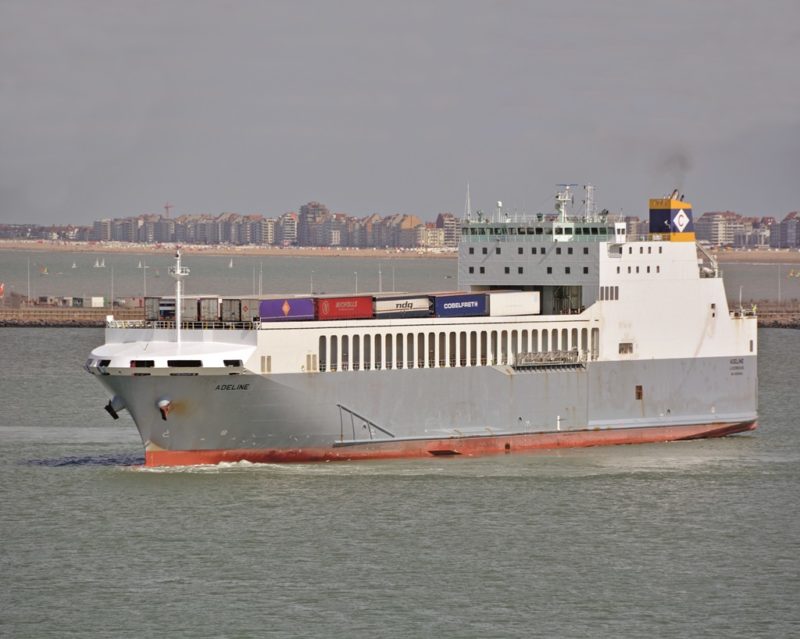
A Belgian Super League Port was created on 22nd April 2022 when the great ports of Zeebrugge and Antwerp merged, and moved forward under a single banner, which has resulted in a forward looking and exciting synergy. Antwerp lies 60 miles east and inland of coastal Zeebrugge, and is around 88 kilometres from the North Sea along the winding Scheldt Estuary, and consists of two ‘kidney’ shaped port areas on either side of the river in the City of Antwerp. Zeebrugge, on the other hand, lies on the coast and is ten miles north of the medieval city of Bruges, from which it gets its name. The combined traffic throughput of the merged port is 287 million tonnes per year, employing 1,800 people directly, and around 164,000 people indirectly.
The Super Port is operated by the limited liability company Antwerp-Bruges Port Authority, within the public laws work frames of the City of Antwerp and the City of Bruges as its shareholders. The merged port is home to the largest integrated chemical industry in Europe, and the second largest container handling port in Europe and an important lifeline in the Belgian economy with over three hundred liner services serving eight hundred destinations throughout the world. It rivals Rotterdam as the largest port in Europe.
Zeebrugge is one of the main entry points in Europe for the supply of LNG with 15% of the total LNG supply in Europe and thus is a green energy hub and has other green initiatives e.g. the construction of a second lock to the inner port and a new road that will reduce traffic congestion and vehicle emissions. The two Belgian ports complement each other and this is reflected, amongst other things, in the shift of container volumes from Antwerp to Zeebrugge. Antwerp was at the limit of its container handling capacity in 2022, with the merger still in transition a year later in April 2023 after the single approach to Belgian port structure. The evaluation of the twin processes and systems continues non-stop. A merger of two great ports is a long term project and involves major technical, operational and management challenges.
HISTORY OF PORT OF ZEEBRUGGE
The port history goes back to medieval times with the creation of small, navigable canals from the City of Bruges to the coast. A proposal was made in 1877 by hydraulic engineer August de Maere, Alderman of the City of Ghent, to build a coastal Belgian port. However, there was no enthusiasm for this in Ghent but the proposal found favour in Bruges. In 1891, the Belgian Government set up the Commission Mixte de Bruges Port de Mer, which held a competition to build a seaport on the coast with an outlet to the sea from Bruges.
On 1st June 1894, an agreement was reached between the Belgian State, the City of Bruges, and the private investors Louis Coiseau and Jean Cousin, in which the conditions for the construction and operation of the new port were laid out. It would consist of three parts:-
- An outport on the Belgian coast at Zeebrugge (meaning Bruges on Sea)
- A sea channel from the outport to Bruges, the Baudouin Canal of length 7.5 miles
- An inland port in Bruges itself located in the north of the city
The Compagnie des Installations Maritimes de Bruges was incorporated on 25th November 1895, and later became the MBZ (Maatschappij van de Bruges Zeehaven), the present Port Authority of Zeebrugge. The capital of the company was 50% subscribed to by the City of Bruges, and 50% by Louis Coiseau and Jean Cousin and other private investors. The construction work began on the artificial harbour in 1896 and continued until completion in 1905, with King Leopold II declaring it open on 7th July 1907.
Shipping traffic was very slow at first due to the limited hinterland of Bruges with little industry, but two regular lines were soon launched, a twice weekly service to Hull, and a frequent service to Rotterdam. A new era of trade, industry and tourism began for both Zeebrugge and Bruges with two hundred ships per year using the new port. The port was occupied by the Germans during World War I, and became a submarine base and a prime target for Allied aerial and sea bombardment. Vice Admiral Keyes in 1917 made a daring raid on Zeebrugge with 1,800 troops and naval personnel on several warships, sinking three cruisers filled with cement across the entrance to Zeebrugge and thus denying it as a submarine base. The German unrestricted submarine warfare had resulted in a huge loss of British merchant ships from the start of 1917.
After World War I, the Port of Zeebrugge lay in ruins, but trade began to slowly return at the end of 1920 when the port had been cleared and reopened. Dredging operations were necessary by 1929 when silting of the port by sand had become a problem, and threatened the busy port with traffic of one million tonnes carried on 950 ships. The long five year Depression of the early 1930s caused a downward scale of activity, but the port revived in the second half of the 1930s with a new molasses terminal, a petroleum oil terminal and a steel plant.
Ships were sunk across the harbour entrance at the start of World War II to block the harbour and the lock gates to the inner harbour were destroyed. The occupying German forces turned the port into a fortified ‘castle’, and later destroyed the port in 1945 to deny it to the Allies. Several years of port reconstruction followed, and by 1951 all of the repair work was completed and ships slowly began to return, especially the larger tankers of 18,000 dwt of that era. In 1961, the Sinclair Petroleum Terminal became operational and the Prins Filips Dock was opened in 1962. The real breakthrough for Zeebrugge came in the second half of the 1960s and the maritime revolution in the size of ships and new cargo handling techniques of roll on, roll off ships, unit loads and containerisation. Townsend Thoresen, the British ferry company, began in 1964 with services from Felixstowe and Dover to Zeebrugge, and in 1972 North Sea Ferries, an Anglo/Dutch company, started a regular ferry service to Hull.
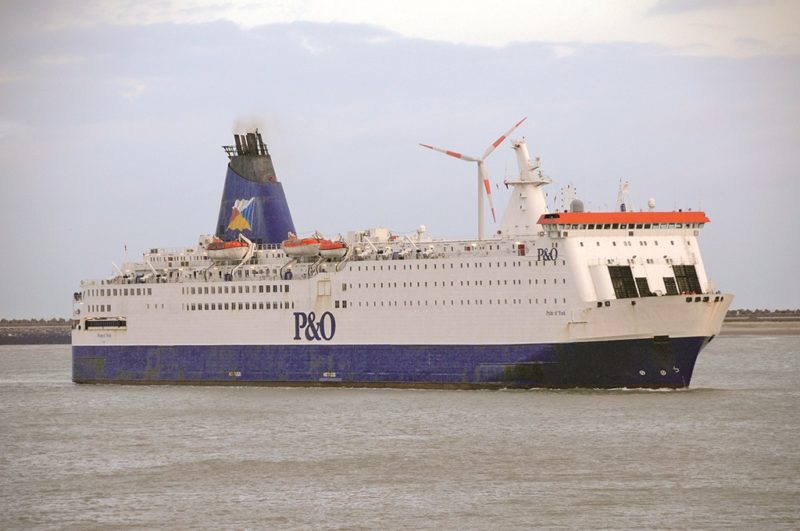
The linkspans of the ferry terminals in Prins Filips Dock were simple and convenient to use, with an adjacent railway station with frequent services to Bruges, Brussels and Paris and north east into the Netherlands. Road signage was good out of the port to the beautiful city of Bruges, with its medieval buildings, and to Brussels some 75 miles away. By 1984, Townsend Thoresen were offering 21 sailings per week on a five hour voyage to Felixstowe at a cost of between £24 to £40, and six per day on a four hour voyage to Dover at a cost of £20. Meals were included on the North Sea Ferries 15 hour voyage to Hull with seven sailings per week at a cost of between £49 and £80. Sailings departed from both Zeebrugge and Hull at 1800 hours daily.
In the early 1970s, the Outer Port had only a western breakwater of length 1,570 metres with an alongside depth that varied between 7.9 metres and 10.5 metres with three bunker berths at the outer end, and gas carrier purging with carbon dioxide and ammonia. There was molasses storage of 30,000 tonnes and a Cold Store of 5,000m3, with twelve traveling jib cranes with capacities from 3 tonnes to 16 tonnes. At the foot of the western breakwater was a car ferry terminal with three ro-ro berths. There was the Western Peninsula area of 18 hectares and a quay length of 1,622 metres with alongside depth of 13.0 metres. The west and north quays were used as container and ro-ro berths, and the south east quay was used as a petroleum terminal. There were warehouses of 18,000m2, and three cranes of 45 tonnes capacity (two Munck and one Boomse).
The Sea Lock in the early 1970s that led to the Baudouin Canal to Bruges was only of length 210 metres with a width of only 21 metres and a water depth over the sill of only 5.5 metres. This Sea Lock led to the Inner Port with access to a turning basin of 200 metres in diameter and two branch docks on the west side of the Baudouin Canal in Prins Filip Dock, 560 metres by 200 metres with a maximum draft of 7.7 metres, and the Old Ferry Dock, 500 metres by 130 metres with a maximum draft of 7.7 metres. The Baudouin Canal had coal and coke wharves and a glass factory.
The rise of Zeebrugge as a ferry port prompted the Belgian Government to expand the port, with the works for the major extension of the port carried out between 1972 and 1985, and included the following:-
- The Outer Port built into the sea and protected by the building of the Eastern Breakwater to give two long extended breakwaters of four kilometres in length, accessible without locks for deep sea vessels. A good depth in the navigation channel and along the quay walls of up to 16 metres made the Outer Port suitable for fast container and ferry ro-ro traffic.
- The Pierre Vandamme Lock of length 500 metres, 57 metres wide, and a useful water depth of 18.5 metres gave access to the Inner Port, which was equipped with two large docks in the North Inlet Dock with a water depth of 14 metres, and the Southern Channel Basin with a water depth of 18.5 metres. The quay areas around these two docks served terminals for handling new cars, break bulk, project cargo and containers.
The New Port of Zeebrugge was officially opened by King Baudouin on 20th July, 1985, and led to a big increase in goods traffic through the port. As a result of the new improved port infrastructure, several major transhipment companies opened new terminals in Zeebrugge handling all types of goods and accommodating most sizes of ships. Several shipping companies e.g. MSC have included Zeebrugge in their ports of call in their schedules of European and American and Asian ports. Freight traffic grew from 14.0 million tonnes in 1985 to 35.5 million tonnes in Millennium year. Almost 10,000 ships per year visited the port in the late 1990s, and ferry companies today include Cobelfret with services to Purfleet, Killingholme, Dublin, Esbjerg, Gothenburg, Hirtshals, and Santander, P. & O. Ferries freight only service to Teesport with a 16 hour crossing, Finnlines O/Y to Helsinki and Tilbury, and other ferry lines calling at the PSA Terminal.
The globalisation of the world economy from 2010 onwards led to big increases in the size of new container ships, the port can currently handle vessels of 20,000 TEU capacity. New terminals, services and routes, improved infrastructure and accessibility are the corner stones of the Port of Zeebrugge in moving forward.
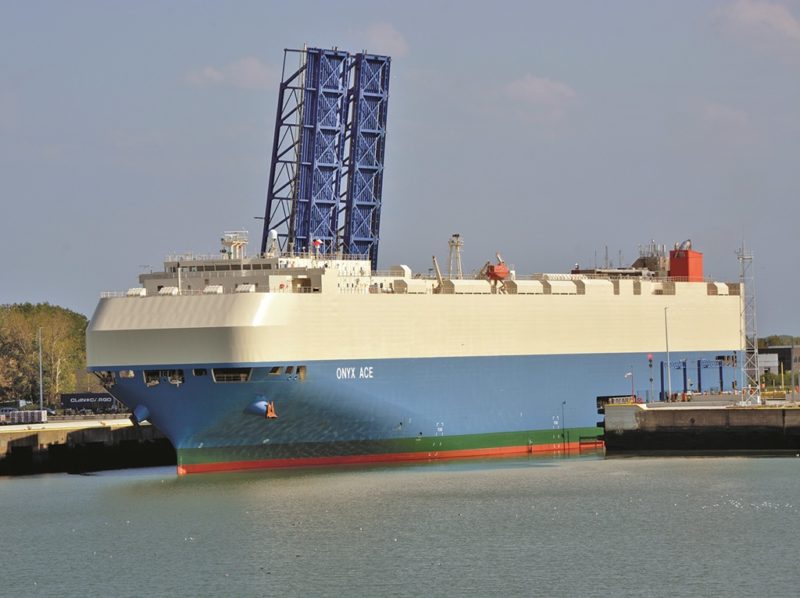
FACILITIES OF THE PORT OF ZEEBRUGGE
ZEEBRUGGE CRUISE TERMINAL
The terminal was inaugurated on 15th June 2018 by the MBZ (Maats van de Bruges Zeehaven), previously cruise ships arriving in the port berthed at cargo quays. This ABC three storey Cruise Tower Building with all three floors serving both passengers and crews. Modern baggage screening, walk through metal detectors, hand luggage screening, free wifi, separate arrival and departure halls, information centre, gift shop, passenger waiting lounges, and separate crew lounge.
There is direct motorway access to Bruges with over eight million tourists per year, and Ghent with two million tourists per year, and their centuries old houses, squares and museums, with shore excursions to both cities as well as World War I Flanders Fields Tours. The number of cruise ship calls and passengers since 2016 is as follows:-
Year Calls Passengers
2016 111 471,084
2017 146 490,000
2018 142 485,000
2019 149 490,000
2020 Covid lockdown, no passengers
2021 Covid lockdown, no passengers
2022 127 410,000
2023 120 460,000
On the following cruise lines:-
Norwegian Cruise Line (NCL) 24
Aida Cruises 17
MSC Cruises 15
Mystic Cruises 10
Peter Deilmann Cruises 5
Celebrity Cruises 5
Oceania Cruises 4
Scenic Cruises 4
Azamara Cruises 4
Regent Seven Seas Cruises 3
Princess Cruises 3
Viking Ocean Cruises 3
Windstar Cruises 2
Costa Crociere 2
Renaissance Cruises 2
P & O. Cruises 2
TUI Cruises 2
Phoenix SeeReisen 2
Carnival Cruises 1
Disney Cruises 1
Royal Carribean International 1
Seabourn Cruises 1
Holland America Line 1
Silversea Cruises 1
Cunard Line 1
Fred. Olsen Cruises 1
Hapag Lloyd Cruises 1
Ambassador Cruises 1
Sea Cloud Cruises 1

CONTAINER TERMINALS
ZEEBRUGGE INTERNATIONAL PORT TERMINAL (ZIP)
This has quays 125-129 with 600 metres of quays and alongside depth of 16.5 metres. A second container terminal has been added to the north side of the Albert II Dock to give a total quay length of 1,500 metres with alongside depths of around 17.0 metres. The terminal is served by five rail tracks, each of 750 metres in length. Capacity is 3.0 million TEU with four large gantry cranes and a dozen other cranes, 90 straddle carriers, and 645 reefer plug connections. There is also a separate ZIP Terminal for handling paper and multi-purpose cargoes.
CONTAINER HANDLING ZEEBRUGGE (CHZ) TERMINAL
This was the first terminal in the Outer Port and occupies quays 202-207 of 1,000 metres in length with alongside depths of 16.0 metres. Extensions in surface area to 42.5 hectares were completed in 2008 with three extra gantry cranes to give six gantry cranes, and modern rail mounted cranes and modern machinery operations.
APM TERMINAL ZEEBRUGGE/CSP ZEEBRUGGE TERMINAL
This is located on the Outer Harbour and can handle the biggest container ships in the world with first class intermodal services that include rail, barge and road networks, 1.2 million TEU per year, seven berths, and 1,500 metres of quays with alongside depths of 15.5 metres, seven Post Panamax ZPMC Gantry Cranes, two rail mounted gantry cranes, 25 straddle carriers and many reach stackers, three rail tracks each of 780 metres in length to give a total of 2,340 metres of rail track, and a host of fork lifts of up to 20 tonnes in capacity. It is now a common user container terminal, renamed as the CSP Zeebrugge Container Terminal, with the concession to COSCO Shipping of China and its OCEAN Alliance partners of CMA CGM of France, OOCL of Hong Kong, and Evergreen Line of Taiwan and began this operation in 2017. The terminal handled the big container ship OOCL United Kingdom of 21,413 TEU capacity on 18th May 2019. She operates on a Far East to Europe loop with six COSCO container ships and six OOCL container ships serving Piraeus, Felixstowe, Zeebrugge, Wilhelmshaven and Gdansk. The even bigger container ship OOCL Spain of 24,188 TEU capacity arrived at Zeebrugge on 26th April 2023. This terminal has automated gate processing, container weighing, container repair and a substantial number of reefer plugs.
LIQUID BULK TERMINALS
ZEEBRUGGE LNG TERMINAL
Fluxys operates the Zeebrugge LNG Terminal in the Outer Harbour for the supply to Continental Europe, currently 15% of the total, and for the storage of LNG. Belgium signed a 20 year contract with Algeria in 1982 to supply LNG, and was importing 3.3 million tonnes (2.9 billion m3) in 1988 and 3.9 million tonnes (4.4. billion m3) in 1990. The red hulled LNG carrier Methania was built for CMB of Belgium in 1978 by Boelwerf at Temse in Belgium on dimensions of overall length 280.0 metres, moulded beam of 41.66 metres, and a loaded draft of 11.73 metres, gross tonnage of 81,792, 67,900 dwt, and of 131,260 m3 capacity. She was laid up at Haugesund after completion until deliveries of LNG began in 1982, and is still trading from Arzew to Zeebrugge and St. Nazaire after 45 years wearing a blue funnel with a white central band.
The Zeebrugge LNG terminal currently consists of two berths for LNG carriers, and five large tanks with a storage capacity of 566,000 m3 and a re-gasification capacity of 6 million tpa. The facility handled 181 ship operations during 2021 compared to 172 operations in 2020 including more transhipments, with May 2021 the busiest month with 26 ships docking. The facility can now discharge the largest LNG carriers in the world, the QMAX (Qatar Max) of 266,000 m3 capacity, of which Al Dafna arrived in April 2023. She has over a dozen sisters owned by Qatar Gas Transport (Nakilat) and managed by Shell. The Exmar LNG carriers Excalibur, Excel, Excelerate, Excellence, Excelsior, Expedient, Exemplar, Experience, Express, Explorer, and Exquisite of up to 173,660 m3 capacity also call at Zeebrugge, as does the coastal LNG carrier Coral Methane owned by Anthony Veder.
OTHER GAS TERMINALS
The Interconnector Terminal in the Outer Harbour connects the Belgian gas grid to the underwater pipeline to Bacton in England. Gas from England can be shipped through the port to Continental destinations, and can be reversed in direction with gas to England.
Euroservices operates a terminal in the Outer Harbour for purging gas carriers and occupies berths 101 and 102. Storage capacity for 22,000 gallons of liquid nitrogen for purging purposes, and a laboratory where gas can be checked and verified.
Zeepipe Terminal operated by Glassco in the Inner Port ensures the safe and efficient arrival of gas from the Norwegian Continental Shelf removing sulphur and residual liquids and solids and regulates the gas pressure and temperature. Gas arrives from the Troll Gas Field under the North Sea via a Zeepipe of 814 kilometres in length.
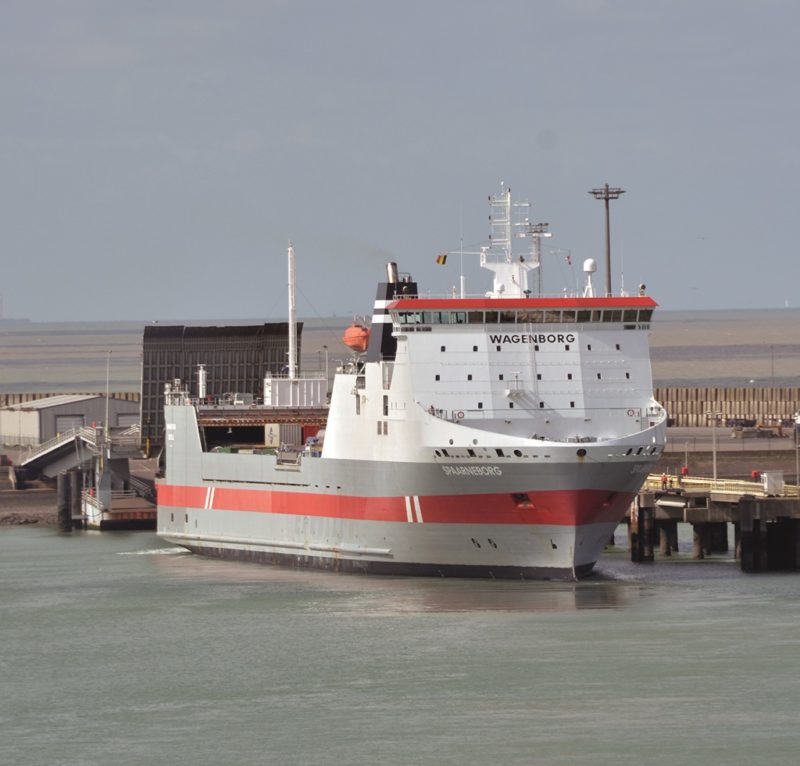
DRY BULK TERMINALS
Zeebrugge Breakbulk Terminal is located in the Outer Port in the Northern Inlet Dock and is operated by Rhenus Holdings Belgium NV for the handling of breakbulk and project cargoes such as forestry products, steel, agribulk and out of gauge items.
Sea-Invest Terminal operates a fruit juice and packing terminal at the Flanders Cold Store for vegetables, meat, fish and other frozen products. It also operates the Belgian New Fruit Wharf handling imported fruit in containers, with six hectares of storage space for over 25,000 pallets of fruit.

European Food Centre is a fish processing and fish auction house for all types of fish e.g. cod, sole, plaice, haddock, bream, skate, scallops, cockles, squid, shrimp, brill, monkfish, turbot and langoustines.
Zeebrugge Food Logistics NV operates a deep freeze warehouse in the Inner Port with six loading areas and 12,000 storage pallets and packing facilities for perishable products.
Borlix Agriculural Terminal operates in the processing of soya beans, oil seeds, linseed, rapeseed in the Inner Port with a storage capacity of 35,000 tonnes. The beans and seeds are discharged from coasters, barges and containers.
Efico Coffee Terminal handles green coffee in a 4.9 acre warehouse with storage space for 300,000 coffee bags. Automated machinery sorts by coding systems, calibrates, samples, colour tests, grades, mixes, dries, as well as debagging and rebagging of coffee. The air temperature, ventilation, humidity, air filtering and sterilisation are constantly monitored in the warehouse.
Tate & Lyle operates a molasses terminal in the Inner Port to refine high quality sugar, food and beverages.
Bridgestone Tyre Terminal has storage for 1.1 million tyres in a nine hectare warehouse, which are received in around 330,000 containers every year.
Brit European Transport NV operates a terminal for the transport, storage and distribution of four thousand rolls of floor coverings in a 3.5 hectare warehouse. The terminal has eight loading areas, four with shelters to protect the floor coverings.
The Baudouin Ship Canal to Bruges has many and varied cargo quays for the handling of sand and gravel, general, project and breakbulk cargo, coal, timber and peat, as well as recycling yards, using small coasters and barges with a newly dredged depth of 8.4 metres. The drydock shipyard of Flanders Ship Repair handles mechanical repairs, welding, piping, engine repairs, high pressure cleaning, painting and sandblasting. The dry dock can repair ships of up to 160 metres in length and has a lift capacity of 4,500 tonnes.
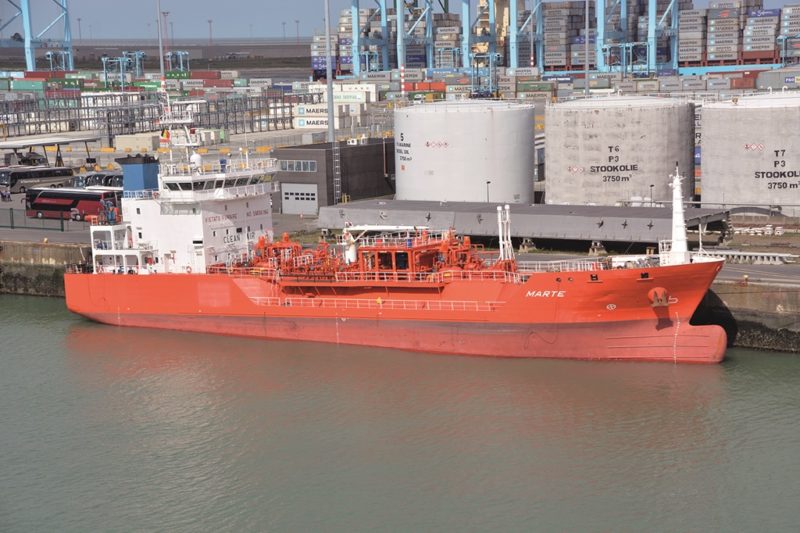
RO-RO TERMINALS
These ro-ro facilities are located in the Britannia Dock, the Swedish Quay and the Albert II Dock. The Britannia Dock covers 61 hectares and has four ship berths up to 310 metres in length with eight rail tracks of 4,600 metres in length. The Swedish Quay occupies 10.5 hectares and uses one ship berth of length 730 metres served by two rail tracks. The Albert II Dock covers 11.5 hectares with one ship berth served by two rail tracks of 380 metres in length. Ro-ro terminals are operated by C.RO Zeebrugge NV, ICO Terminals, Toyota, CdmZ for new cars, and Wallenius Wilhelmsen Lines for new cars and trucks and wheeled cargo of agricultural and construction equipment. The terminals have one, two, three or four berths and use mobile cranes of up to 50 tonnes capacity in storage yards of up to 50 hectares in area. Transhipment feeder containers use Intermodal connections by rail or inland canal barges to reach the Belgian and Dutch hinterland. The Port of Zeebrugge is a very big port with a throughput of around 50 million tonnes, and yet the town had a small population of only 18,000 in 2018.
COMPARISON OF 2010 and 2019 ZEEBRUGGE PASSENGER and CARGO STATISTICS
2010 2019
Ocean vessels handled 8,863 10,171
Total Cargo (M. Tonnes) 40.2 45.8
Containerised tonnage 16.4 16.7
Ro-Ro cargo 12.5 16.5
Liquid bulk 8.0 10.8
Dry Bulk 1.7 1.3
Breakbulk cargo 1.1 0.9
Inland cargo 0.6 0.6
New cars (million) 1.6 2.96
Cruise passengers 130,000 490,000
Ferry passengers 950,000 828,000
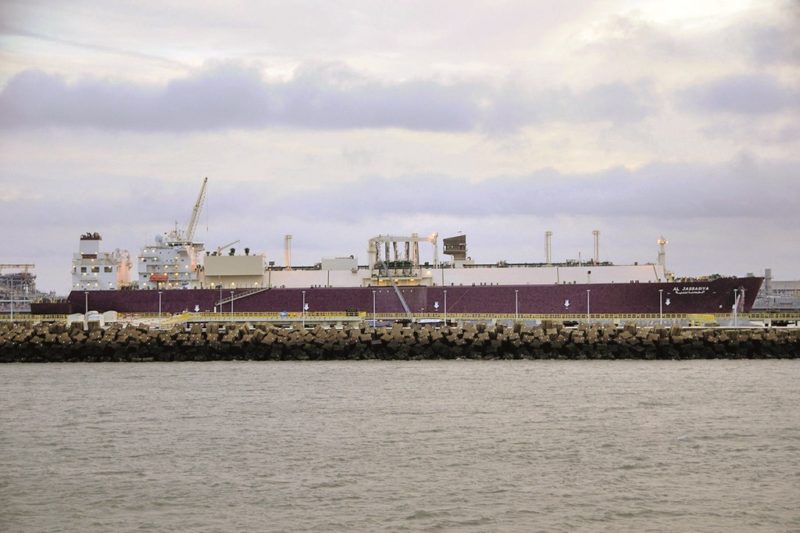
HISTORY OF THE PORT OF ANTWERP
The story of this great port dates back to the 12th Century when wooden ships with passengers and cargo plied the waters of the Scheldt. Unfortunately, every time the Scheldt was closed to navigation due to wars or natural events, a period of economic decline followed for Antwerp. The Spanish Navy captured Antwerp in 1585 and the occupiers closed off the Scheldt, with Antwerp rapidly sinking into a steep decline to become only an inland port for a long time. Canals to Bruges and Ghent were the only ways that small amounts of goods could be brought in or out of Antwerp.
At the start of the 19th Century, Napoleon Bonaparte as the next occupier of Belgium with a strong French Army, built two docks in 1811 behind a lock in Le Petit Bassin and Le Grand Bassin. This was the start of the modern Port of Antwerp as we know it today as the fast moving river caused damage to ships moored at river berths, particularly at very high tides and during storms. The only solution was docks behind locks, which were a guarantee of calm water for bigger ships to load and unload in protected docks.
An historic agreement was reached in 1863 when the Dutch Government no longer levied heavy tolls on ships moving from the North Sea near Vlissingen along the Scheldt to the Belgian border and on to Antwerp. The port began to expand with eight new docks and locks added between 1856 and 1870 and export cargoes increased six-fold. German, French and American trading companies opened offices in Antwerp. The first railway line in Belgium connected the Port of Antwerp with the Port of Cologne in Germany in 1843, creating the first cross border link.
The Port of Antwerp became a major gateway to Western Europe, and the line of the river Scheldt to the north of Antwerp was straightened and improved for navigation in the 1880s, with five new docks systems opened using a third sea lock. By 1929, the Port of Antwerp covered 300 hectares with thirty kilometres of quays, and handled over twenty million tonnes of cargo of every conceivable type with much transhipment inland to Holland and Germany. During the 1930s, the Port of Antwerp was the busiest port in Continental Europe, and many grain elevators were built in the port, which also moved large quantities of coal, general cargo, chemicals, refrigerated fruit and meat. Car assembly plants and many new factories and warehouses were built along the protected wet docks systems. The Congo passenger liners of Cie Maritime Belge used the Scheldt river loading and unloading berths 208, 210, 212, 214, 216, 218, 220, 222 and 224. The Antwerp Ship Store and Fuel Co. Ltd. used the coaster Marnix of 292 grt, and built at Muntendam in 1918, for stores supplies to the big passenger liners including the Red Star Line ships crossing the Atlantic to New York.
When the Port of Antwerp was liberated at the end of World War II, the Germans had not destroyed the port as at Rotterdam and at Hamburg, and it became one of the few ports in Europe that had not been completely destroyed, and could quickly be used again. Thus, in 1950, the port handled 29 million tonnes of cargo and port expansion included the construction of two new docks and the first oil refineries and chemical plants for clients that included Amoco Fina, Monsanto, Bayer and the Albatros refinery.
A Ten Year Plan covered the period from 1956 to 1966 and included the construction of new docks on the right bank of the Scheldt, with a new mooring jetty for large tankers, and a new sea lock at Zandvliet, the largest lock in the world at that time. One of the first container ships in the world, Atlantic Span of 16,630 dwt and 575 TEU of containers, was completed at the Rheinstahl Nordseewerke yard in 1967 for Atlantic Container Line and made her maiden voyage from the Churchill Dock in Antwerp. In 1966, the Port of Antwerp handled 300,000 TEU of containers, and three years later this had grown to over one million TEU of containers.
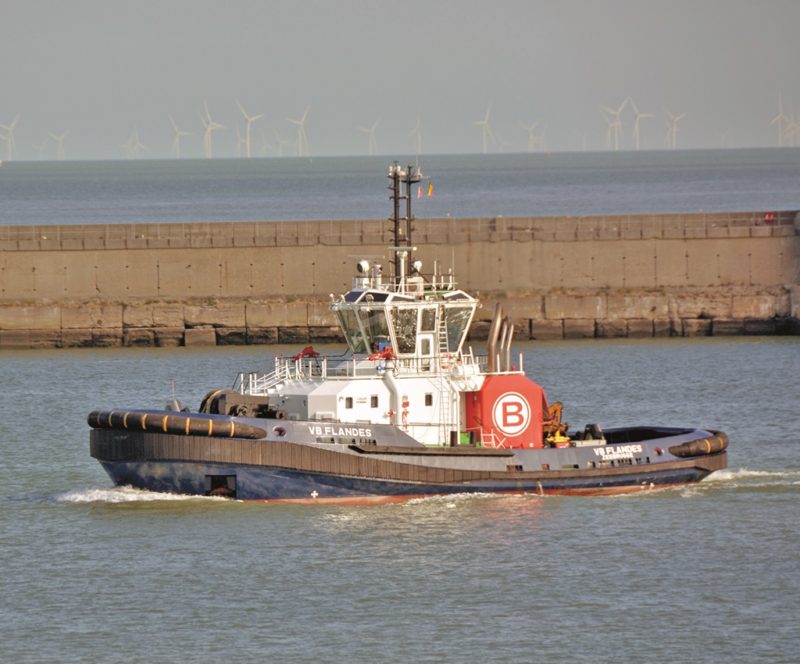
In the mid 1960s, the Port of Antwerp began the process of developing the left bank of the Scheldt, with construction of the Kallo lock to develop new industrial sites that were needed. The left bank Waasland Port of 6,600 hectares became an industrial, oil and chemicals port. In 1969, the Kennedy tunnel under the Scheldt was completed to give a second tunnel crossing. A six year plan covering the period from 1970 to 1976 saw the completion of the right bank dock system, and the left bank dock system had been built through the Sawfinge marshes to avoid bottlenecks in the right hand docks system. In 1970, Port of Antwerp traffic was in excess of 60 million tonnes and 3 .3 million TEU containers were handled.
The Port of Antwerp in the early 1970s thus comprised four distinct parts, as follows:-
- Tidal river berths along the right bank of the river bordering the city and extended upstream for three miles from the Kattendijk Lock of 110.0 by 24.6 metres to petroleum refineries where the river draft was 9.7 metres, and with the important Cockerill shipyard beyond some two further miles upstream. All berths were rail connected and equipped with modern sheds and cargo handling systems. The shipyard built ships up to a length of 250 metres and 90,000 dwt on six berths, and the engine works could build steam turbine, steam reciprocating machinery and diesel engines up to 20,000 bhp. There were two dry docks of dimensions 201 by 26 metres, and 152 by 20 metres.
- Eight Wet Docks with depths between 6.8 and 9.2 metres and close to the North of the City of Antwerp and entered via the Royers Lock of 179.8 by 21.9 metres. These were named Timber Dock, Kattendijk Dock, Asia Dock, Campine Dock, Willem Dock, Straatsburg Dock, Lefebyre Dock and Campine Dock.
- The North part of the Wet Docks system with depths between 10.0 and 16.75 metres and entered from the Scheldt by one of three sea locks, Zandvliet lock of 500 by 57 metres, Baudouin lock of 360 by 45 metres, and Van Cauwelaert lock of 270 by 35 metres in dimensions. These large docks included the Churchill Dock, Leopold Dock, Hansa Dock, Albert Dock, America Dock, Marshall Dock, the Industrial Basin and an Oil Harbour.
- The new under construction left bank docks system and entered via the Kallo lock of 147 by 50.3 metres with a depth of 16.0 metres at high tide allowing tankers of up to 150,000 dwt to access the new refineries and petrochemical plants that were opening at this important time in the history of the port. The disadvantage of having only one Kallo lock for access was solved by the new big Kieldrecht lock of dimensions 500 by 68 metres and opened in 2016.
The Port of Antwerp in the mid-1970s had warehouses of 926,000 m2 in an area owned by the City of Antwerp, private warehouses of 1.283 million m2, private timber sheds of 522,000 m2, a Cold Store of 420,000 m2, potash storage of 286,000 tonnes with a loading rate of 6,000 tonnes per day, and covered Freeport storage for 100,000 tonnes. Bulk storage for coal, iron ore, fertilisers etc were handled by modern bridge cranes of 25 tonnes capacity with discharge rates of 2,000 tonnes per day. The Sobelgra company handled grain cargoes in Wet Dock 6 with silos of a capacity of 106,000 tonnes on a 365 metre in length quay with two discharging grain elevators and a belt conveyor system for transhipment or storage. The Samga company had a grain silo capacity of 120,000 tonnes with five grain elevators, and the De Trouw company also had a large grain silo capacity, with in addition eleven floating grain elevators in the river. The total granaries capacity of the port was well in excess of 250,000 tonnes.
The City of Antwerp in the 1970s owned ten dry docks for repairs to ships, the largest being 208 metres in length with a width of 25 metres and there were eight privately owned dry docks, the largest being 270 metres in length by 25 metres in width. Coal and fuel oil or diesel oil was available in unlimited quantities from refinery or by barge, with the stipulation that no barges were allowed alongside a discharging tanker. Fresh water from hydrants or by barge and provisions and stores were delivered to the quay. The port quays used 464 cranes and gantries of all types up to 100 tonnes lift capacity, manufactured by Peiner, Boomse and Kocks, and there were a large fleet of forklifts and mobile cranes available. There were six ro-ro terminals with a dozen berths and facilities also for the LASH system of barge carrying.
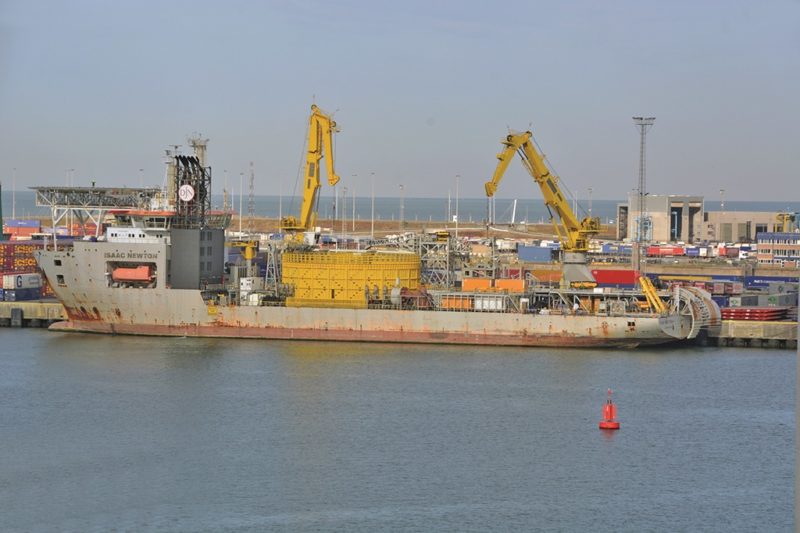
In the 1970s, the port had a huge tug fleet consisting of almost eighty tugs of up to 2,500 bhp, with 44 privately owned tugs available on the river, and 35 tugs working in the docks and owned by the City of Antwerp. The Tanker Cleaning Berth was to the north east of the Baudouin lock, and ships could be ballasted at several river berths. The Antwerp to Liege Canal was deepened and widened in the 1970s and terminated at Straatsburg Dock, and the intensive barge traffic in the river below Antwerp used the new Schelde-Rhine Canal and terminated at Kanaal Dock B3.
The shipping revolution of containerisation, ro-ro facilities, and special facilities for handling heavy project cargo required no lock systems, and container terminals such as the North Sea Container Terminal and oil terminals owned by Exxon Mobil were built on the right bank of the river, and needed no protection. In 1970, the Port of Antwerp handled 60 million tonnes of cargo and five years later container throughput had reached 3.3 million TEU, rising to 80 million tonnes handled in 1985 with 11 million tonnes of container cargo, and to 108 million tonnes handled in 1995 with 26 million tonnes of container cargo. Volumes of cargo have continued to rapidly increase since then, and in 2022, the merged Port of Antwerp-Bruges handled 287 million tonnes of cargo including 150 million tonnes of container cargo.
The new Deurganck Dock was built on the left bank of the river and was opened by King Albert II in the summer of 2005 with over five kilometres of quay walls as the largest tidal dock in the world. The most recent deep dredging of the Scheldt was in 2010 with a constant depth of 13.1 metres at low tide and 15.5 metres at high tide all the way to the sea. This was essential to allow the new container ships of 24,000 TEU capacity e.g. MSC Tessa of 24,116 TEU capacity arrived on 20th April 2023 and MSC Loreto of 24,188 TEU capacity arrived on 26th May 2023.
CURRENT FACILITIES of the PORT OF ANTWERP
CRUISE TERMINAL
The Port of Antwerp offers a big selection of river cruises both upstream and downstream of the port in modern low air draft cruise ships e.g. River Empress of 110 metres in length and 11.5 metres beam with three passenger decks for 65 staterooms (4 suites, 18 balcony, 36 De Luxe, 7 Classic) for 130 passengers and a crew of 42. The Sun Deck offers 360 degree views of the changing views while travelling on the major river systems of Belgium, Germany and Holland. Ocean cruise ships also berth at the City Cruise Terminal located only 200 metres from the city centre. This terminal has two main passenger areas and covers 16.2 acres with facilities for luggage handling, security, cafes and passenger lounges. In the summer of 2023, the cruise ships Bolette and Braemar of Fred. Olsen Cruises arrived, the cruise ship Ambition (ex Mistral) of Ambience Cruises, and one each from Le Ponant Cruises, Aida Cruises, Oceania Cruises, Regent Seven Seas Cruises, National Geographic Cruises, Hapag Lloyd Cruises and other cruise lines also arrived in the port. River cruisers also berth at Quays 18 and 19 (Scheldt Quays), Kattendijk Dock and the Willem Dock.
CONTAINER TERMINALS
EUROPA CONTAINER TERMINAL
This huge container terminal was opened in 1990 as the first tidal container terminal on the right bank of the Scheldt by the Port of Antwerp. It has a quay length of 1,180 metres, a maximum alongside depth of 14.5 metres, a big area of 72 hectares and a maximum throughput capacity of 2.0 million TEU per year. There are nine tall Post Panamax Gantry Cranes with an outreach of up to 20 containers wide. The Europa Terminal is currently undergoing a massive expansion and rebuild, and a temporary loading platform has been placed jutting out from the angled 45 degree end of the long quay for barge traffic, and also to guarantee a smooth service for all users including feeder container ships during the rebuilding work.
NORTH SEA CONTAINER TERMINAL
This equally big container terminal was opened in 1997 downstream of the Europa Container Terminal as the second tidal container terminal on the right bank of the Scheldt by the Port of Antwerp, and is very similar to the Europa Terminal in terms of organisation and infrastructure and working hours of 24/7. The terminal has a quay length of 1,225 metres with a maximum alongside depth of 17.0 metres, a big area of 79 hectares, and a maximum throughput capacity of 2.6 million TEU per year. There are fourteen Post Panamax Gantry Cranes with an outreach of up to 25 containers wide, and a large fleet of rubber tyred gantry cranes, reach spreaders, yard top loaders, forklifts, and rail access giving intermodal solutions.
DEURGANCK DOCK CONTAINER TERMINALS
MSC PSA EUROPEAN TERMINAL (MPET) and DP ANTWERP GATEWAY
Deurganck Container Terminal opened on 6th July 2005 as a tidal container terminal on the left bank of the Scheldt and does not require the use of locks. The wharves of this container terminal stretch for 5.5 kilometres, with the giant Kieldrecht Lock at one end of Deurganck Container Terminal giving access to the left bank Waasland Port. The north part of the container terminal is operated by a joint venture between MSC and PSA International known as MPET, while the south part of the terminal is operated by DP World as the Antwerp Gateway. The two companies joined forces in September 2020 to intensify the use of rail transport to use the existing rail facilities at the DP World part, whereas the MPET part did not have any rail connections.
The MPET part of Deurganck Container Terminal is used by MSC Shipping and has 3.7 kilometres of quay length, an area of 242 hectares, and a volume of over 50% of Antwerp container handling with a capacity of 9 million TEU per year. The terminal works 24/7 and has automated truck loading and unloading using OCR (Optical Character Recognition). There are 30 barge loadings per day for the inland waterways, and the terminal has 38 quay cranes of which 20 are Post Panamax Gantry Cranes, and with 228 reach stackers and storage yard cranes, and 3,408 reefer plugs it is a very important terminal using green electricity generated from wind turbines off the Belgian coast. It is a joint venture between the Port of Antwerp and TIL, founded by the Aponte family, the owners of the MSC container company, in 2000.
LIQUID BULK TERMINALS
Until recently, Antwerp had four oil refineries with an annual processing capacity of 40 million tonnes of crude oil per year. The Rotterdam-Antwerp Pipeline connected two of these large refineries to Rotterdam to ensure a continuous supply of crude oil.
EXXON MOBIL REFINERY
This refinery processes varying grades of crude oil from low sulphurs to high sulphurs impurities, and it is received via the Rotterdam-Antwerp Pipeline, co-owned by Exxon Mobil. Oil products include petrol, LPG, naptha, kerosene, diesel, heavy fuel oil, gas oil, and petrochemicals for the chemical industry. The company has invested over $2 billion in the refinery since 2008, which was used to purchase a cogeneration unit with an output of 130 megawatts supplying electricity to the refinery and two polymer plants on site.
TOTAL REFINERY
This refinery is the largest TOTAL refinery and petrochemical complex in Europe, and processes 338,000 barrels of crude oil per day, together with a petrochemical plant that produces 1.1 million tonnes of polymers per year e.g. ethylene to make plastics. The refinery has 1,700 employees, and oil products also include heavy fuel oil, gasoline, LPG, diesel, aviation jet fuel, base chemicals, olefins, butane, propane, aromatics and high density polyethylene. One million euros have been invested since 2013 in three projects at the refinery for greater sulphur removal, a gas recovery unit to transform some product into feedstock for petrochemical production, and an ethane unit importing 200,000 tonnes of ethane per year from Norway.
ANTWERP TERMINAL & PROCESSING COMPANY (ATPC)
Formerly a Petroplus Refinery with a capacity of 975,000 m3 per day of oil products, with nine tanker jetties with an alongside draft of 14.0 metres, and 114 storage tanks, with the refinery connected to the extensive European Pipeline Network to ensure supply of crude oil, with ATPC producing hydrocarbon feedstocks, intermediates and finished oil products. Petroplus sold the refinery in 2012 to VTTI, an international oil group with 10 million m3 of oil storage products across the world, and the refinery was renamed ATPC.
INDEPENDENT BELGIAN REFINERY (GUNVOR)
The BRC Antwerp Refinery was formerly a Petroplus Terminal with an output production of 107,500 barrels per day or 17,090 m3 per day. Petroplus was declared bankrupt in 2012, and the refinery was sold to Gunvor and renamed as the Independent Belgian Refinery. However, it was closed in 2020 and converted to a distribution terminal.
DRY BULK, BREAKBULK AND GENERAL CARGO
These cargoes are loaded and unloaded in both the left bank and right bank areas of the port, at the PSA Breakbulk Terminal, the Verrebroek Dock, and Vrasene Dock on the left bank using the Kallo lock and the Kieldrecht lock. The right bank dry bulk quays are at the Bonaparte Dock, America Dock, Albert Dock, and Delwaide Dock using the big Berendrecht lock of 500 metres in length and 68 metres in width. There are three floating cranes in the port for heavy project cargo, named Brabo of 800 tonnes lift capacity, and Portunus and Titan of 45 tonnes lift capacity, with 30 quay mounted cranes in the two municipal dock systems.
PSA BREAKBULK TERMINAL
This new terminal has a quay length of 1,319 metres, maximum alongside depth of 13.0 metres, a big area of 25.9 hectares, and uses six mobile cranes with a maximum lift capacity of 140 tonnes. There are several new covered warehouses of a total of 47,000 m2 with a bridge crane of 40 tonnes lift capacity. The adjacent Steel Coil Wharf has a quay length of 400 metres, a maximum alongside depth of 15.2 metres, an area of 5.2 hectares with a mobile crane of 100 tonnes capacity, coil rolling equipment of up to 40 tonnes capacity, and tractors and trailers up to 120 tonnes capacity. The integration of rail and road systems at this brand new facility allows for Intermodal solutions in the port.
RO-RO TERMINALS
The Port of Antwerp handled 10.9 million tonnes of ro-ro cargo in the first six months of 2022 using the left bank facilities of the Verrebroek Dock and Vrasene Dock. The Port of Antwerp is a leading port for the automotive imports from across Europe including cars, trucks, trailer mounted machinery, project cargo, heavy equipment and rail rolling stock. Second hand cars and trucks are also exported by Wallenius Wilhelmsen, and Hoegh Autoliners Pure Car and PCTC carriers.
INLAND CARGO and PROJECT CARGO
In the early 1970s, most of the cargo handled by the Port of Antwerp was imported and exported from the nearby Belgian and Luxembourg areas, however twenty years later most of the imports passing through the port were transhipped for destinations in Holland, Germany, France, Switzerland, Italy with onward canal connections to the Danube, and exports from these countries was high.
A huge fleet of 1,420 inland low draft vessels and barges made 56,500 visits to the Port of Antwerp in 2020 transporting 101 million tonnes of cargo to and from destinations throughout Europe as far as Turkey. This was an increase of 15% above the figures for 2010 with this barge traffic on the inland waterways being 59% liquid bulk, 27% container, 11% dry bulk, and 3% other types of cargo.
The inland port of Duisburg in Germany, the biggest inland port in Europe, has a daily rail and barge service from the Port of Antwerp using vessels of six inland river operators in EGS, HTS Group, Contargo, Hupac, Kombiverker and Haeger & Schmidt. The Port of Antwerp and these companies use barge tracking software to cope with this big fleet, and the port offers financial support on the price of this software to inland operators.
Project cargo is a speciality of the Port of Antwerp, with the heaviest item so far lifted from a quay in the port weighing in at a record 955 tonnes.
Specialist heavy lift operators such as SAL Heavy Lift, Jumbo Heavy Lift and Intermarine of Houston (Texas) have many experienced heavy lift vessels and widely experienced staff and crews to undertake such heavy and hazardous cargo operations.
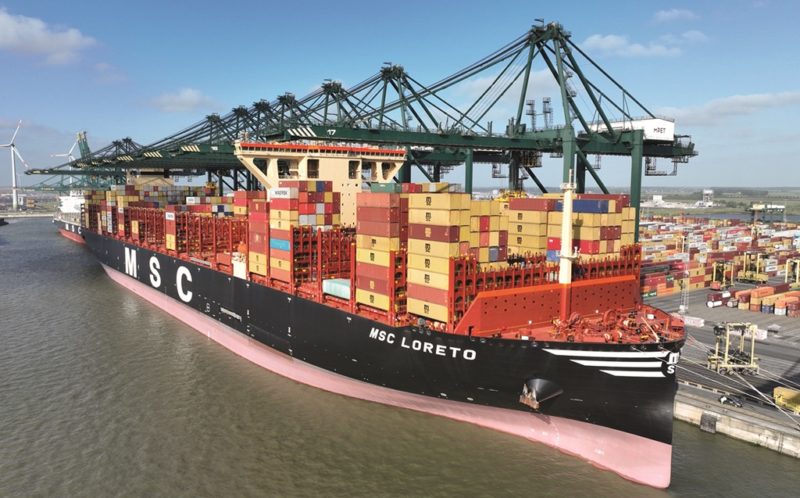
PORT SERVICES
The Antwerp Port Authority was established in 1997 as an independent municipal company with wide ranging powers to handle the smooth running of the port along with the Belgian Government and investors in the port.
The Scheldt estuary and river had by then equipped with a chain of radar stations to monitor shipping traffic from the North Sea near the Dutch port of Vlissingen to the extensive dock systems of the Port of Antwerp.
The Belgian and Dutch Governments now have four signed treaties for joint nautical management on the Scheldt, as well as a Memorandum of Understanding to improve the natural environment and achieve harmony between shipping traffic needs and flood protection and nature conservation.
The Port of Antwerp offers expert pilotage services for Ship Masters using the port with the pilot service co-ordinating all movement of vessels and flow of traffic over the whole length of the Scheldt estuary and river. Pilots are highly qualified captains with college degrees in nautical science, and they have wide ranging maritime careers.
The service operates 24/7 working in shifts. The Harbour Master has complete control over all shipping traffic within the Port of Antwerp, and also has to maintain public safety, and compliance with all port regulations, oil spillage, disposal of garbage and waste, and particularly the transport of dangerous or hazardous cargoes.
Bunkering of the conventional fuels of heavy fuel oil, diesel oil and gasoline are available in the port. The Titan bunkering operator uses the specialist LNG and biofuels tanker Kairos of 4,376 dwt in the ports of Antwerp and Zeebrugge.
Kairos conducted her first LNG bunkering operation on 15th April 2019 in the anchorage of Sandhamn near Stockholm, and conducted her first Simultaneous Operation (Simops) bunkering job on 23rd September 2019 at the Vuosaari Harbour Container Terminal in the Port of Helsinki. Biofuels such as ammonia, methanol, hydrogen and others will also be offered in the future.
Towage services are conducted by both Boluda Towage and Antwerp Towage in the Port of Antwerp, with Boluda Towage also having the sole concession for towage services in the Port of Zeebrugge, as well as operating in a total of 21 European ports. Antwerp Towage was formed in 2008 as a joint venture between leading towage and salvage operators Fairplay and Multraship. The fleet includes Fairplay 1, Fairplay III, Fairplay X and Fairplay XIV, all of 70 tonnes bollard pull, and Multratug 3 of 94.7 tonnes bollard pull, and Multratugs 26, 27 of 63 tonnes bollard pull, and Multratugs 31, 32, 33 and 34 of 77 tonnes bollard pull.
Behind the municipal locks of Antwerp, the tugs of the separate towage fleet of the Antwerp Port Authority (APA) must be used. They carry out around 19,000 towage operations per year using 18 tugs, both on the right bank and on the left bank dock systems. They have no names, just numbers e.g. 52, with a hydrogen powered tug to be commissioned later in 2023, the first in the world.
The port also has support vessels and contract dredgers to maintain the depth of the long Scheldt approach to the Port of Antwerp.
Drones are now used to improve port security with security partners during incidents, and also for berth management, monitoring, infrastructure inspections, oil spills and floating waste detection. Six drones fly a total of 18 daily missions, and are remotely controlled from a Command Centre in the heart of the port.
SUMMARY
Since 2019, the merged PORT of ANTWERP-BRUGES and the Great Lakes Seaway System have worked closely together to facilitate trade between North America and the industrial areas of Europe. On 16th May 2023, an event for shippers was held in Dusseldorf in Germany at which the merged ports were represented, and the St. Lawrence Development Corporation, and Fednav Shipping of Canada. The World Multimodal 2023 event was held at the National Exhibition Centre in Birmingham on 13th June.
The merged ports play a considerable part in the export of goods overseas including unaccompanied freight, as well as much well organised inland cargo by sophisticated barge and rail systems from the port container terminals. The merged ports were represented at Birmingham together with many freight forwarders, logistics companies and supply chain operators. Representatives of the merged ports attend many similar events throughout the year in the hard sell of the considerable abilities and facilities of the merged ports.
The merged PORT of ANTWERP-BRUGES had a very satisfactory first year of operation with total throughput, containerised cargo, liquid bulk cargo, dry bulk, breakbulk and general, ro-ro, inland, and project cargo all increasing. The two merged ports are also home to a huge number of 1,400 companies with factories and offices over a wide industry and services base, that together with port revenue, generate an added value of €21 billion. The ports are managed by a Chief Executive Officer (CEO) in Jacques Vandermeiren, and a Board of Directors, with the owning investors being the City of Bruges and the City of Antwerp. Vice-Mayor of Antwerp, Annick de Ridder is President of the Board of Directors, and Mayor of Bruges Dirk de Fauw is the Vice President.

The integration process for transforming the various digital applications into a single system is well underway. Geographical data from the Zeebrugge digital platform has since been integrated into the Antwerp digital platform, and real-time data e.g. from air quality sensors data has also been linked to it. The merged ports have become a major player in the import, local production, processing and throughput of green hydrogen and hydrogen carriers e.g. ammonia and methanol, with hydrogen projects now being rolled out e.g. hydrogen powered tugs, the first in the world. This Super League Port has ambitions to become even bigger as an increase in scale brings with it greater political and economic clout. The merged ports will at some point in the future become a serious rival to the biggest European Super League Port of Rotterdam, and thus the future of the two merged ports is thus secure for several decades to come
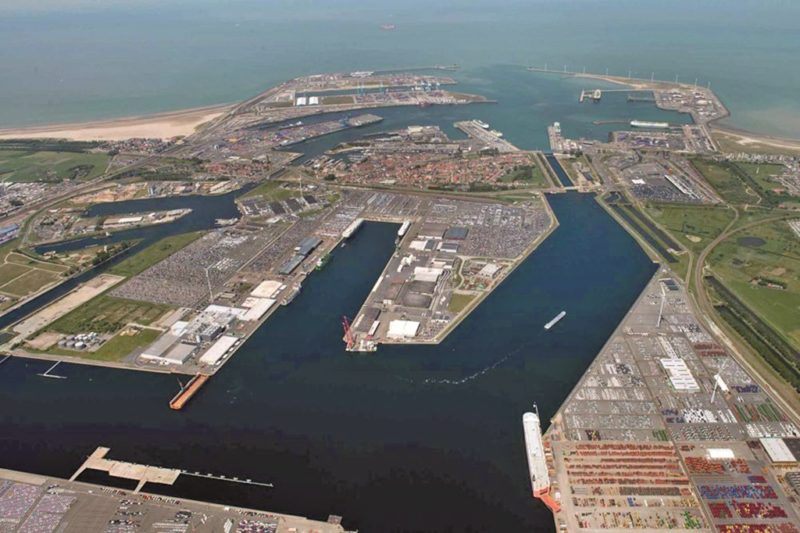
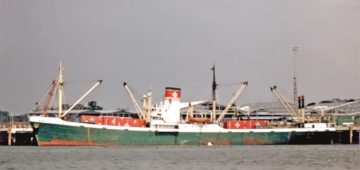



Comments
Sorry, comments are closed for this item